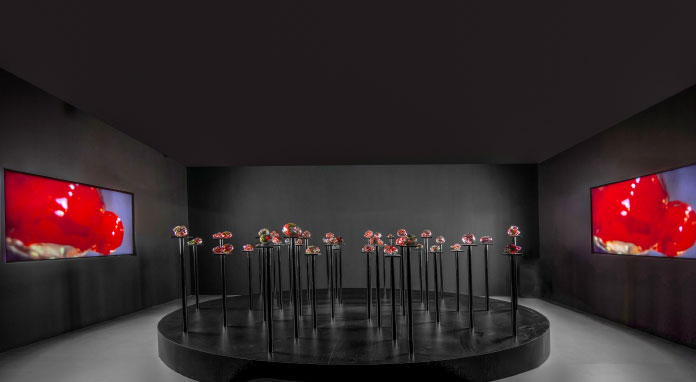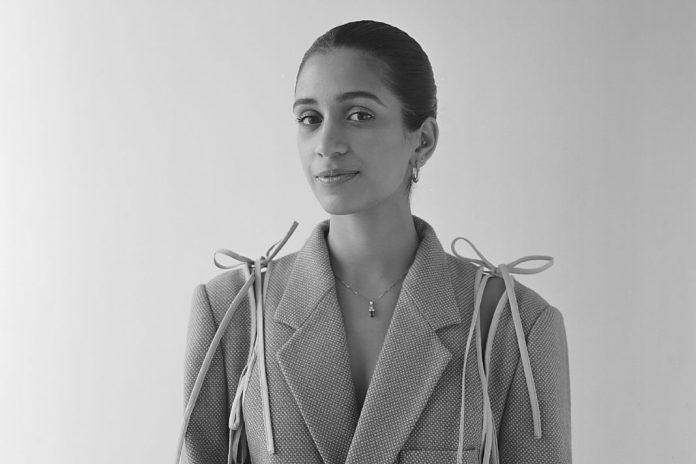Talented multimedia artist and photographer, Mashael Alsaie, recently represented her native Bahrain at the Noor Riyadh festival, which with more than 120 large-scale light art installations from over 100 artists, is the largest of its type in the world. Farah Baig spoke to her about her love of the arts, her creative process and mythological inspirations behind her work.
Born from a curiosity about how we perceive and relate to the world, Ms. Alsaie’s intrigue developed into ways of capturing the world around her. To this day, she is an eternal student, exploring new materials, mediums and ways of making things. However, it was the subject of Bahraini mythology which really ensnared her imagination and put her on her path to international recognition.
“My practice expresses a research-driven interpretation of Bahraini mythologies via text, image and glass,” she explains. “Incorporating themes of science fiction and ecofeminism, my most recent work explores water mythologies and, in particular, the myth of the Adhari Spring. My initial curiosity about Adhari drew from a childlike affinity towards storytelling, mythologies and particularly those that considered the land.”
Ms. Alsaie’s Sea of Tears (2023) is a newly commissioned multimedia installation at the Noor Riyadh festival in Saudi Arabia that investigates the folklore of Ain Adhari, a desolate natural spring in Bahrain. “The process of creating my latest installation is founded primarily on research and writing. I began the work documenting the site of the Adhari Spring, then imagined sites of the spring in my series False Pools. Once I started exploring multimedia work, particularly the poetic materiality of glass, I could fully form my questions about the mythology of Adhari.”
The installation uses glass sculptures and two-channel video to investigate the folklore of Ain Adhari, a desolate natural spring in Bahrain, through the lens of mythology, ecofeminism and oral histories. “The Myth of the Maiden of Adhari recalls the plight of a young maiden who is menacingly approached by a strange man in a palm tree grove and consequently wails in fear until her gushing tears are metamorphosed into an eternal, mythical spring,” she explains.
“Although dried out since the 1980s, Ain Adhari remains imprinted in the collective memory of those who witnessed it at its most fertile. Sea of Tears reimagines the metaphysical transformation of Adhari from the virgin’s physical body into a body of water as a three-part narrative composed of sculptural glass tears and video and audio. Both elemental and poetic, the installation calls into question multiple parallels of transformation and attitudes towards land and resources.”
 Ms. Alsaie’s art career has gone from strength-to-strength, having been featured at exhibitions including Misk Riyadh, Warehouse421 and KBHG Basel in recent years. However, the opportunity to showcase her work at the world’s largest light art festival was an especially proud moment.
Ms. Alsaie’s art career has gone from strength-to-strength, having been featured at exhibitions including Misk Riyadh, Warehouse421 and KBHG Basel in recent years. However, the opportunity to showcase her work at the world’s largest light art festival was an especially proud moment.
“It was great to be in conversation with other artists, both spatially within the exhibition and also on the ground during panels and activations,” she believes. “Festivals of this kind are important to highlight talent in the region and it’s a unique opportunity to come together to consider other practices and ways of making. I was working on this project for more than four years, so to see it come to fruition was truly wonderful.”
“One particularly poignant moment was when my grandmother visited the exhibition. It was one of the biggest highlights of my artistic life. Having recorded some narrative voiceovers for the project, she heard her voice in the overhead speakers, and sharing this with her brought me so much joy,” she concludes.
To check out more of Ms. Alsaie’s amazing work, visit her Instagram @mashael.alsaie


































